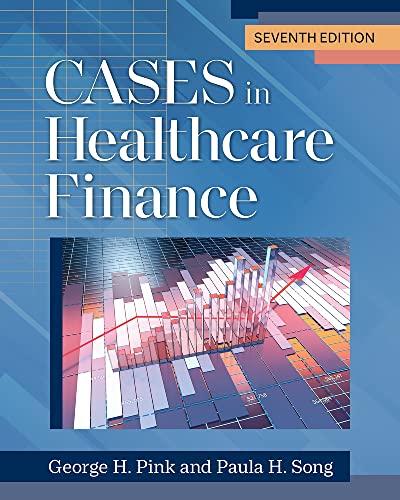Question
Balance Sheet 12/31/19 Income Statement 12/31/19 Cash $ 90 Sales $ 9,000.9 Accounts receivable $ 1,260 Operating Costs $ 8,100.9 Inventories $ 1,440 Depreciation $
| Balance Sheet | 12/31/19 | Income Statement | 12/31/19 | |
| Cash | $ 90 | Sales | $ 9,000.9 | |
| Accounts receivable | $ 1,260 | Operating Costs | $ 8,100.9 | |
| Inventories | $ 1,440 | Depreciation | $ 360.0 | |
| Total Current Assets | $ 2,790 | EBIT | $ 540.0 | |
| Net fixed assets | $ 3,600 | Interest | $ 144.0 | |
| Total Assets | $ 6,390 | Pre-tax earnings | $ 396.0 | |
| Taxes (25%) | $ 99.00 | |||
| Accounts payable & accruals | $ 1,620 | Net Income | $ 297.00 | |
| Line of credit | $ - | |||
| Total Current Liabilities | $ 1,620 | Additional Information | ||
| Long-term debt | $ 1,800 | Dividends | $ 100 | |
| Total Liabilities | $ 3,420 | Additions to RE | $ 197 | |
| Common stock | $ 2,100 | Common shares | 50 | |
| Retained earnings | $ 870 | EPS | $ 5.94 | |
| Total common equity | $ 2,970 | DPS | $ 2.00 | |
| Total Liabilities & Equity | $ 6,390 | Ending stock price | $ 40.00 |
| Hatfield | Industry | |
| (Op. costs)/Sales | 90% | 88% |
| Depr./FA | 10% | 12% |
| Cash/Sales | 1% | 1% |
| Receivables/Sales | 14% | 11% |
| Inventories/Sales | 16% | 15% |
| Fixed assets/Sales | 40% | 32% |
| (Acc. Pay. & accr.)/Sales | 18% | 12% |
| Tax rate | 25% | 25% |
| Target WACC | 10% | 11% |
| Interest rate on debt | 8% | 7% |
| Profit margin (M) | 3.30% | 5.60% |
| Return on assets (ROA) | 4.60% | 9.50% |
| Return on equity (ROE) | 10.00% | 15.10% |
| Sales/Assets | 1.41 | 1.69 |
| Asset/Equity | 2.15 | 1.59 |
| Debt/TA | 28.20% | 16.90% |
| (Total Liabilities)/(Total Assets) | 53.50% | 37.30% |
| Times interest earned | 3.80 | 11.70 |
| P/E ratio | 6.70 | 16.00 |
| OP ratio: NOPAT/Sales | 4.50% | 6.10% |
| CR ratio: (Total op. capital)/Sales | 53.00% | 47.00% |
| ROIC | 8.50% | 13.00% |
f. Continue with the same assumptions for the No Change scenario from the previous question, but now forecast the balance sheet and income statements for 2020 (but not for the following three years) using the following preliminary financial policy. (1) Regular dividends will grow by 10%. (2) No additional long-term debt or common stock will be issued. (3) The interest rate on all debt is 8%. (4) Interest expense for long-term debt is based on the average balance during the year. (5) If the operating results and the preliminary financing plan cause a financing deficit, eliminate the deficit by drawing on a line of credit. The line of credit would be tapped on the last day of the year, so it would create no additional interest expenses for that year. (6) If there is a financing surplus, eliminate it by paying a special dividend. After forecasting the 2020 financial statements, answer the following questions.
-
- How much will Hatfield need to draw on the line of credit?
- What are some alternative ways than those in the preliminary financial policy that Hatfield might choose to eliminate the financing deficit?
Step by Step Solution
There are 3 Steps involved in it
Step: 1

Get Instant Access to Expert-Tailored Solutions
See step-by-step solutions with expert insights and AI powered tools for academic success
Step: 2

Step: 3

Ace Your Homework with AI
Get the answers you need in no time with our AI-driven, step-by-step assistance
Get Started


